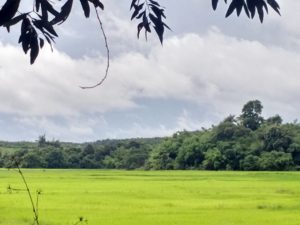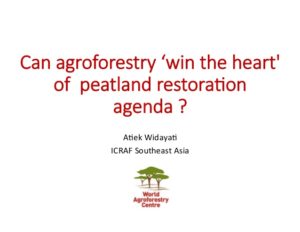 By Prasit Wangpakapattanawong, originally posted at Agroforestry World Blog
By Prasit Wangpakapattanawong, originally posted at Agroforestry World Blog
Myanmar (formerly Burma) is a newly democratic country. Centuries before, this country was rich in culture, natural resources and competent citizens, the latter likely influenced by the colonial government of Britain. Visiting the former capital, Yangon, in the rainy season gives you a sense of how green the city is, with the intense monsoon rains making you appreciate why the citizens wear sandals.
After decades of military rule, everything seemed to be possible when the country held a general election in 2015. Its citizens, especially the younger generation, seemed to beam with hope for a bright and prosperous future, as the country had been economically far behind neighbouring Southeast Asian countries. Being sandwiched between the two giants of Asia—China and India—can, in my opinion, be both a blessing and a curse, as the country wants to stand on its own feet but still relies heavily on foreign investment.
The former military government forced universities to be scattered all over the country to prevent students from staging protests in the former capital. About 30 minutes from the current capital, Nay Pyi Daw, more than 370 km north of Yangon, there are three universities: Yezin Agricultural University; Yezin University of Forestry; and the University of Veterinary Science, Yezin. The current political situation should allow clever minds in these universities to blossom and help steer the country in the right direction.
Taking a road trip from the former capital to the current one leads through gently rolling landscapes, flanked in the distance by north-south mountain ranges. The greenness of the roadside agricultural land and sparsely-forested areas makes someone with an agroforestry background imagine endless possibilities for various kinds of agroforestry practices: agro-silvicultural, silvopastoral and agro-silvopastural. This is just a part of the story of where agroforestry can be appropriate. The country also features diverse ecological zones where agroforestry can certain play a vital role, from the dry central area through the extremely long (and vulnerable) coastline to high mountain ranges. The above-mentioned universities can be a driving force for all things agricultural and forestry. Some Thai universities, too, such as Chiang Mai University where I am based, could play a strategic role in providing technical support.

A team of specialists from ICRAF The World Agroforestry Centre—Horst Weyerhaeuser, capacity and institutional building specialist; Robert Finlayson, interim head of global communications; and I, Thailand country coordinator—recently met with high-ranking agricultural and forestry officials, who were extremely positive about the possibility of creating an inventory of existing agroforestry practices in the country and introducing new ones. It has been difficult in the past to do this owing to the sectoral division between the two departments. According to the officials, ICRAF can help bridge this divide.
Internationally-funded local NGOs are equally excited, as are foreign organizations—such as the European Union, Gesellschaft für Internationale Zusammenarbeit and the Swiss Agency for Development Cooperation—which are also looking forward to seeing on-the-ground implementation of agroforestry for food security, environmental protection and climate-change mitigation and adaptation. This demonstrates a well-defined niche for ICRAF as capacity builders in agroforestry policies and practices, agroforestry inventory compilers and designers of agroforestry systems.
Yet there is only one ICRAF project in Myanmar, run from the East and Central Asia Program based in Kunming, China. To provide more support to the smallholders and government of Myanmar, ICRAF needs to prepare more ground very carefully with local and international partners, which will take some time and resources, so that Myanmar can improve the livelihoods of its millions of smallholding farmers, secure its food supply and sustain the services provided by the environment.
This research relates to the CGIAR Research Program on Forests, Trees and Agroforestry











